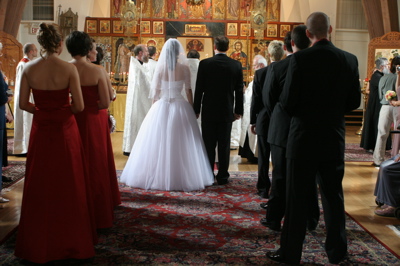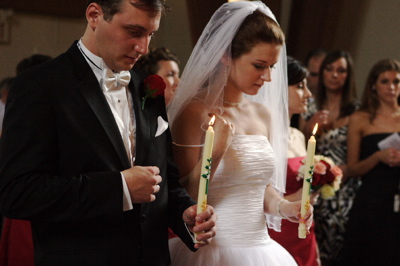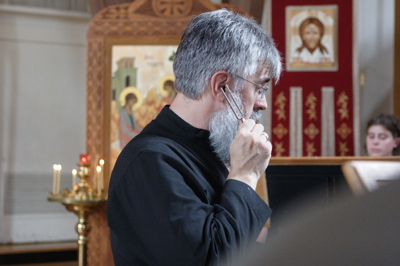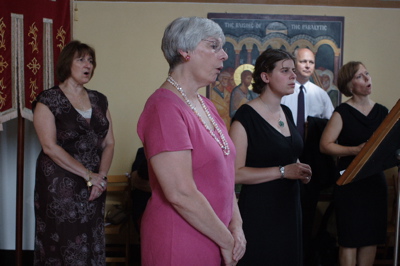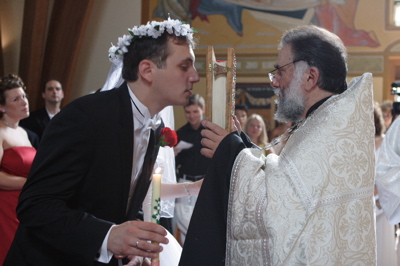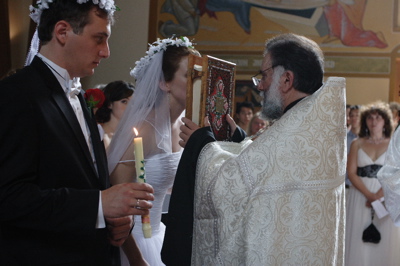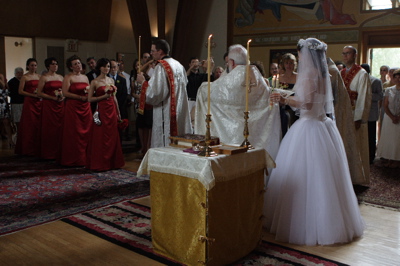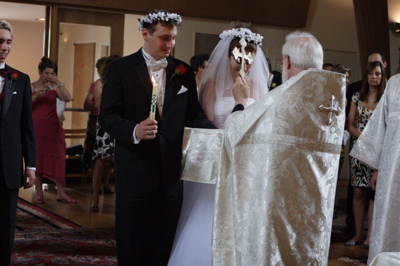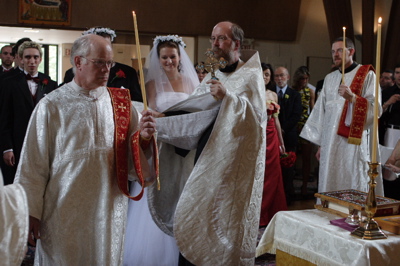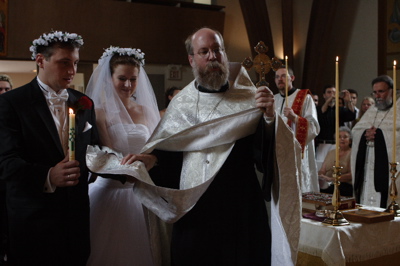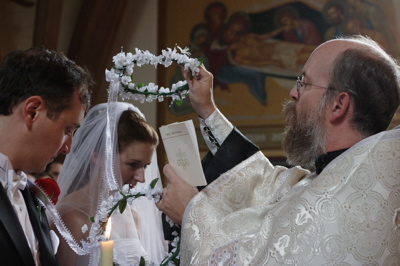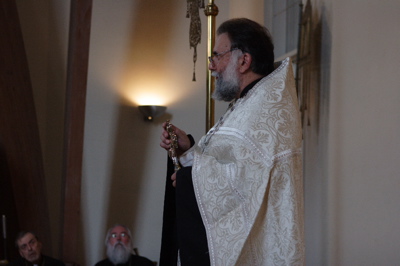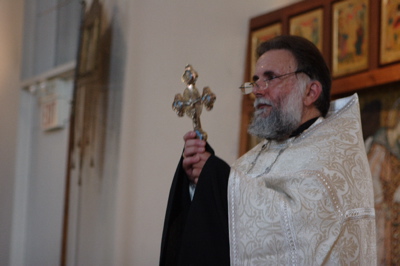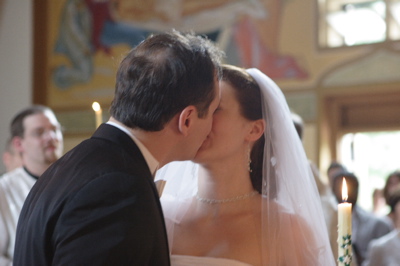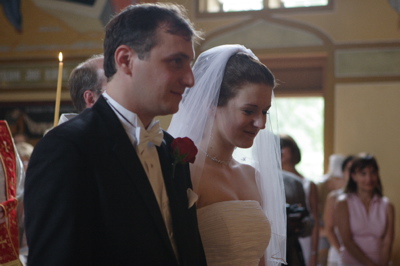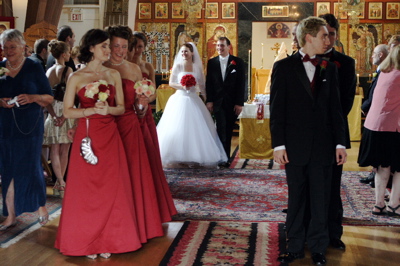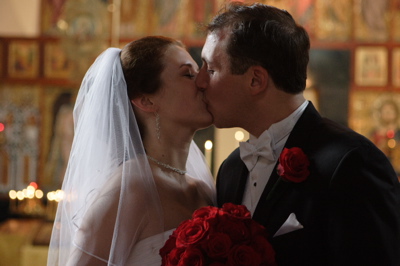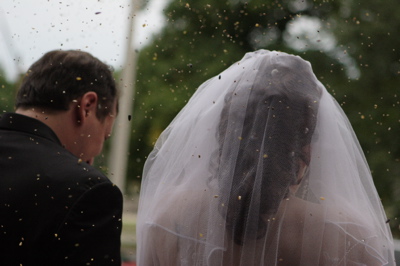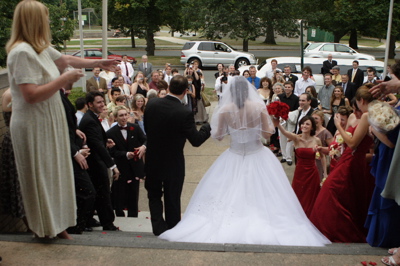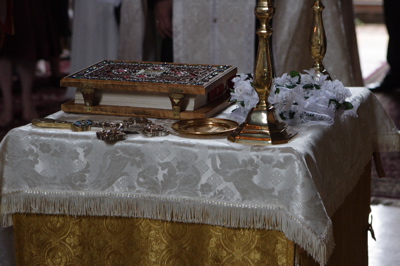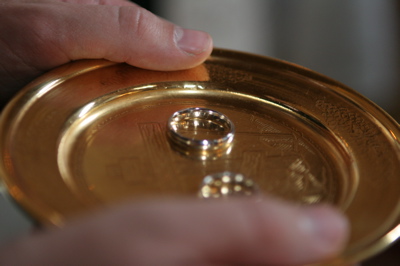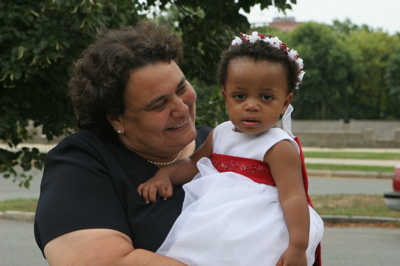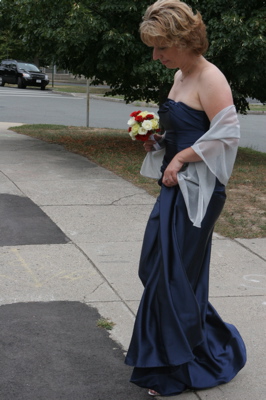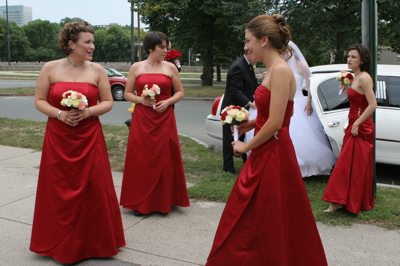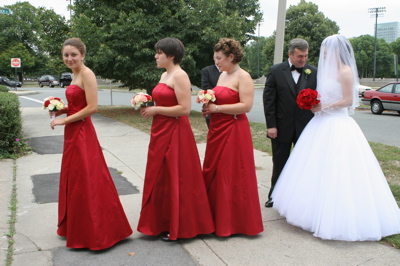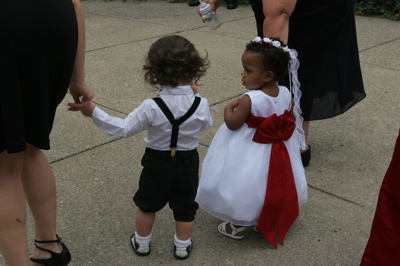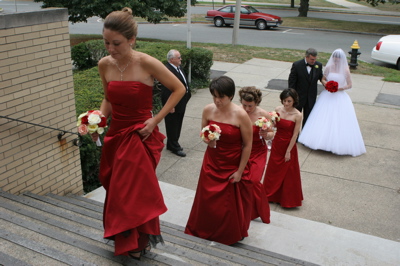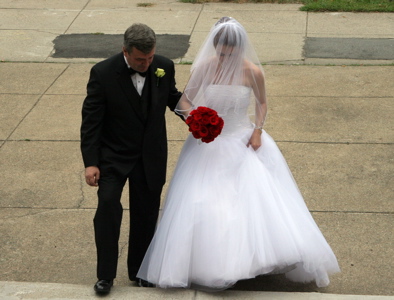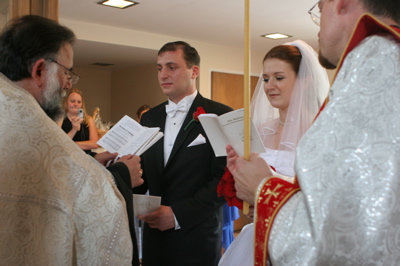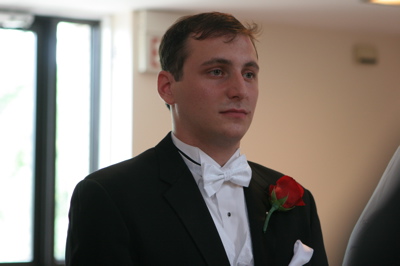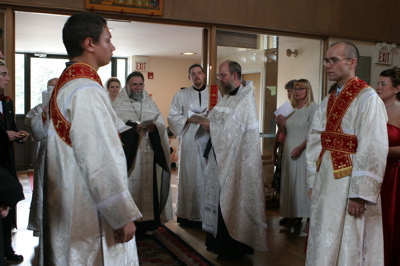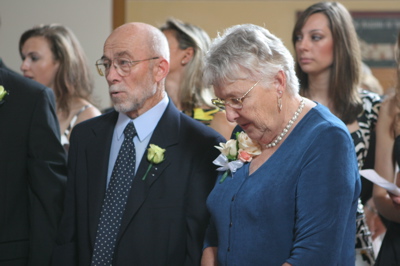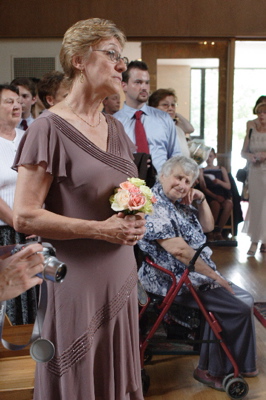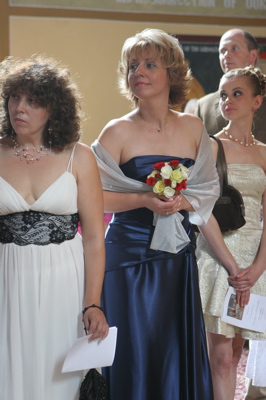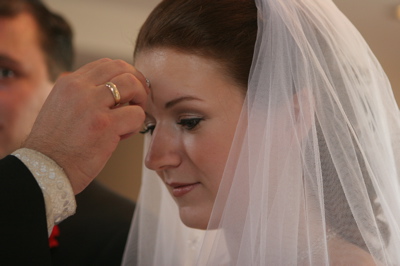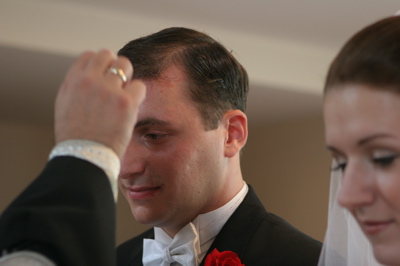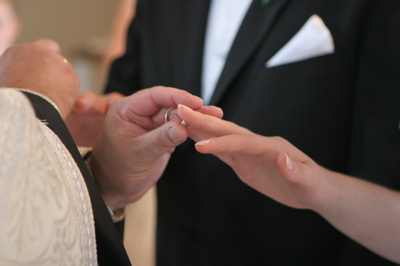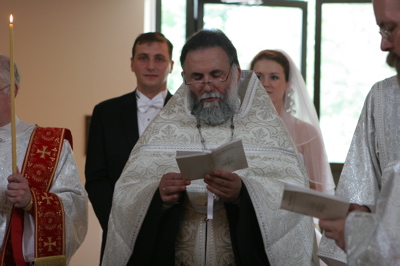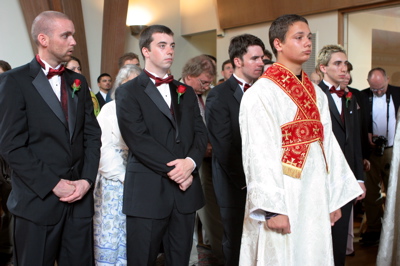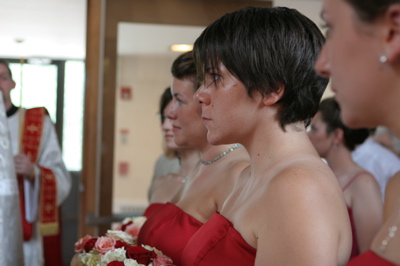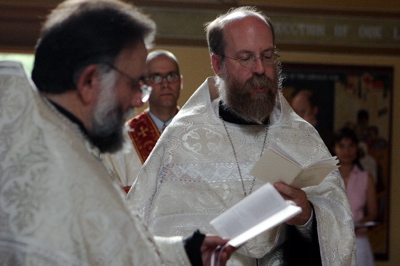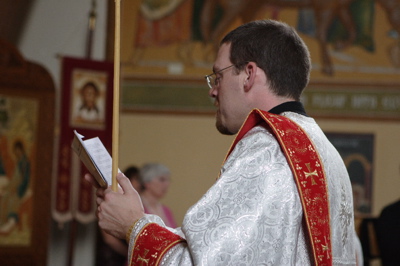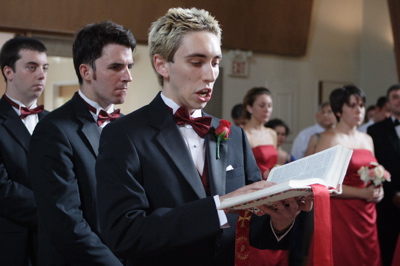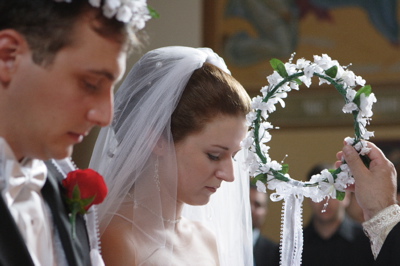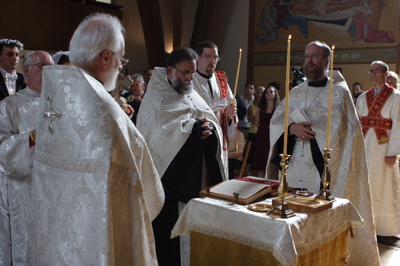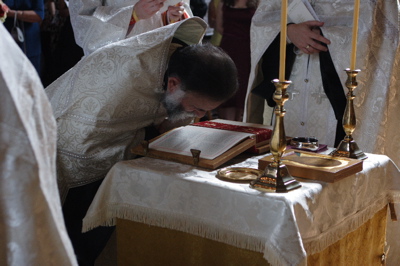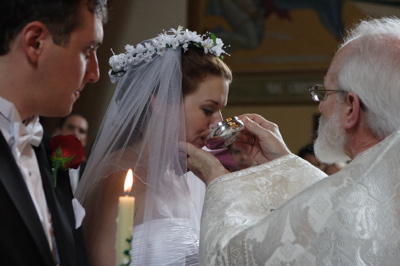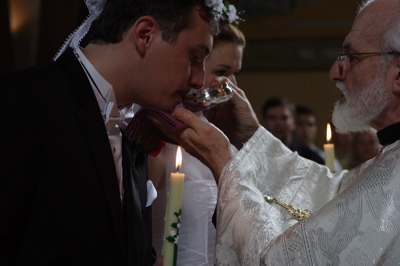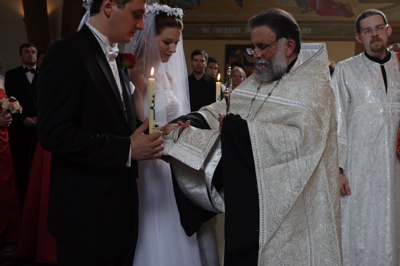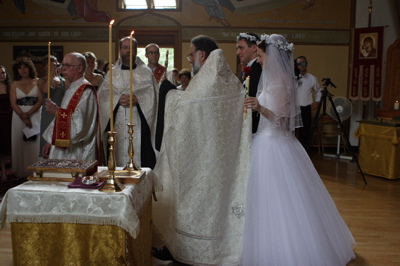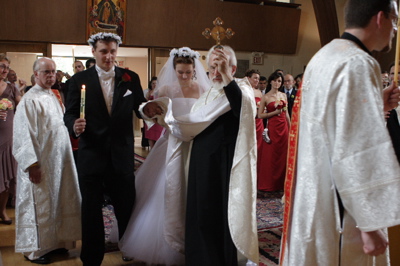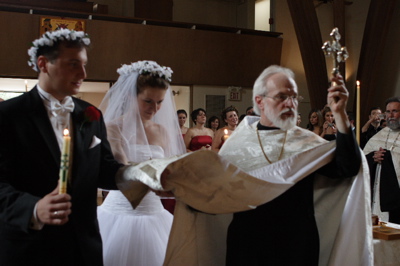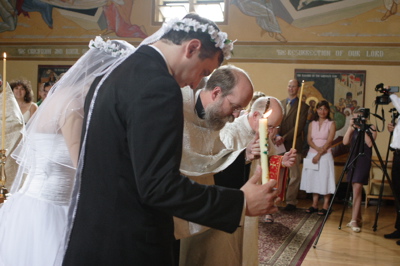“…and the two shall become one flesh. This mystery
is a profound one, and I am saying that it refers to Christ and the
Church…”
(Ephesians 5:31-32)
To best describe the intimacy that exists between Christ and his Church,
St. Paul uses the relationship between husband and wife. Just as Christ
and the Church are inseparably bound to each other for all eternity
so too are husband and wife indissolubly joined to one another for
all eternity: “What God has joined together, let no man put
asunder.” (Mt.19:6) As Christ and the Church are the new creation
given to the world for its life and salvation the mystery of marriage
is given to the world as one of the ways in which human love is brought
into the saving and transfiguring love of God.
The Orthodox wedding service is comprised of what were originally
two separate rites pre-dating Christianity and which were later incorporated
into the marriage service. Taking place in the narthex of the Church,
the first rite is the formal engagement or exchanging of rings and
signifies the giving of oneself to the other. This covenant of self-offering
is dependent on the willingness and personal sacrifices of the betrothed
couple and their mutual faith and love for God. “Therefore,
O Lord, our God… look upon your servant Michael and your servant
Alina, and establish and make firm their betrothal, in faith and in
oneness of mind, in truth and in love.”
|
The second rite,
which takes place in the center of the nave, is referred to as the
crowning service. Brought into the Church’s sacramental life,
the marriage crowns became associated with the crowns of the martyrs
who fearlessly and victoriously witnessed to Christ with their own
blood. In its most basic understanding, martyrdom is a faithful witnessing
to Christ who, as the God-Man, took upon himself sin and death so
that humanity and all creation may be regenerated and deified. The
crowning of Michael and Alina signifies that their new life as husband
and wife seeks to bear witness to the truth of the Gospel and the
reality of God’s kingdom.
The common cup, preceded by the Lord’s Prayer strongly suggests
that the sacrament of marriage was celebrated in the context of the
Eucharist, the new and everlasting covenant of the Lord. Drinking
from the common cup expresses that all of life is to be shared between
husband and wife. Joys and sorrows, struggles and accomplishments
are to be mutually shared. Drinking from the common cup followed by
the joining of hands are actions revealing two lives being formed
into one new life in Christ. Thus, a new community of faith is created
and is called to make present the eternal hospitality of the Christ.
- Father Robert M. Arida
|

